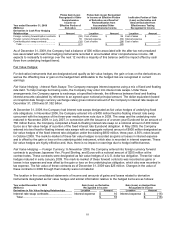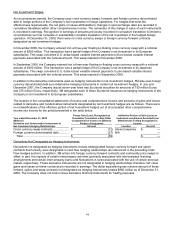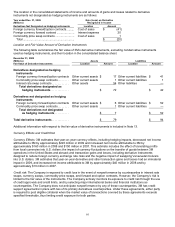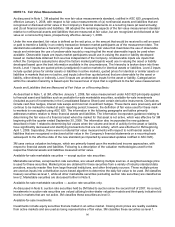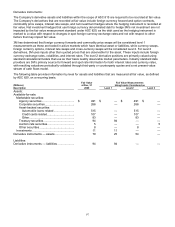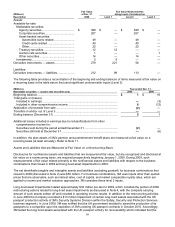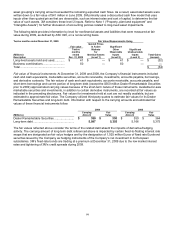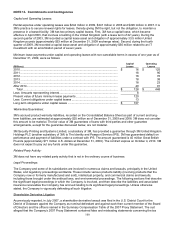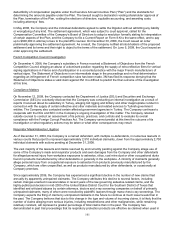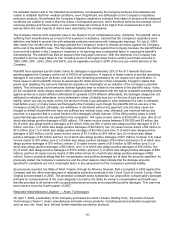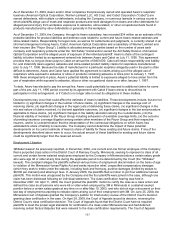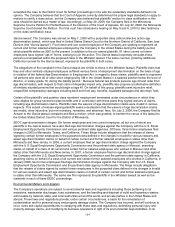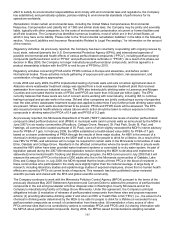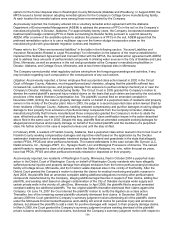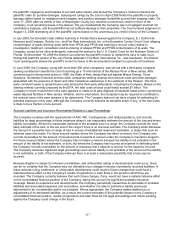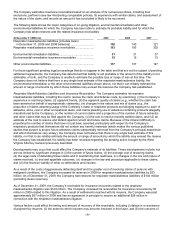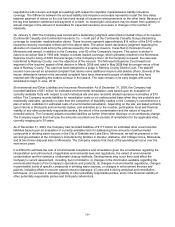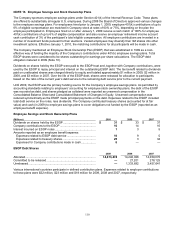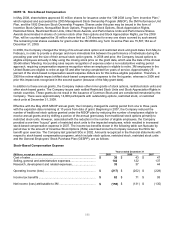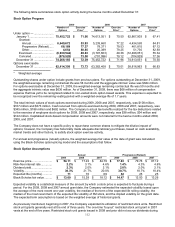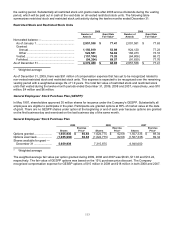3M 2009 Annual Report Download - page 109
Download and view the complete annual report
Please find page 109 of the 2009 3M annual report below. You can navigate through the pages in the report by either clicking on the pages listed below, or by using the keyword search tool below to find specific information within the annual report.
103
As of December 31, 2009, Aearo and/or other companies that previously owned and operated Aearo’s respirator
business (American Optical Corporation, Warner-Lambert LLC, AO Corp. and Cabot Corporation (“Cabot”)) are
named defendants, with multiple co-defendants, including the Company, in numerous lawsuits in various courts in
which plaintiffs allege use of mask and respirator products and seek damages from Aearo and other defendants for
alleged personal injury from workplace exposures to asbestos, silica-related, or other occupational dusts found in
products manufactured by other defendants or generally in the workplace.
As of December 31, 2009, the Company, through its Aearo subsidiary, has recorded $34 million as an estimate of the
probable liabilities for product liabilities and defense costs related to current and future Aearo-related asbestos and
silica-related claims. Responsibility for legal costs, as well as for settlements and judgments, is currently shared in an
informal arrangement among Aearo, Cabot, American Optical Corporation and a subsidiary of Warner Lambert and
their insurers (the “Payor Group”). Liability is allocated among the parties based on the number of years each
company sold respiratory products under the “AO Safety” brand and/or owned the AO Safety Division of American
Optical Corporation and the alleged years of exposure of the individual plaintiff. Aearo’s share of the contingent
liability is further limited by an agreement entered into between Aearo and Cabot on July 11, 1995. This agreement
provides that, so long as Aearo pays to Cabot an annual fee of $400,000, Cabot will retain responsibility and liability
for, and indemnify Aearo against, asbestos and silica-related product liability claims for respirators manufactured
prior to July 11, 1995. Because the date of manufacture for a particular respirator allegedly used in the past is often
difficult to determine, Aearo and Cabot have applied the agreement to claims arising out of the alleged use of
respirators while exposed to asbestos or silica or products containing asbestos or silica prior to January 1, 1997.
With these arrangements in place, Aearo’s potential liability is limited to exposures alleged to have arisen from the
use of respirators while exposed to asbestos, silica or other occupational dusts on or after January 1, 1997.
To date, Aearo has elected to pay the annual fee. Aearo could potentially be exposed to additional claims for some
part of the pre-July 11, 1995 period covered by its agreement with Cabot if Aearo elects to discontinue its
participation in this arrangement, or if Cabot is no longer able to meet its obligations in these matters.
Developments may occur that could affect the estimate of Aearo’s liabilities. These developments include, but are not
limited to: (i) significant changes in the number of future claims, (ii) significant changes in the average cost of
resolving claims, (iii) significant changes in the legal costs of defending these claims, (iv) significant changes in the
mix and nature of claims received, (v) trial and appellate outcomes, (vi) significant changes in the law and procedure
applicable to these claims, (vii) significant changes in the liability allocation among the co-defendants, (viii) the
financial viability of members of the Payor Group including exhaustion of available coverage limits, (ix) the outcome
of pending insurance coverage litigation among certain other members of the Payor Group and their respective
insurers, and/or (x) a determination that the interpretation of the contractual obligations on which Aearo has
estimated its share of liability is inaccurate. The Company cannot determine the impact of these potential
developments on its current estimate of Aearo’s share of liability for these existing and future claims. If any of the
developments described above were to occur, the actual amount of these liabilities for existing and future claims
could be significantly larger than the reserved amount.
Employment Litigation
Whitaker lawsuit: As previously reported, in December, 2004, one current and one former employee of the Company
filed a purported class action in the District Court of Ramsey County, Minnesota, seeking to represent a class of all
current and certain former salaried employees employed by the Company in Minnesota below a certain salary grade
who were age 46 or older at any time during the applicable period to be determined by the Court (the “Whitaker”
lawsuit). The complaint alleges the plaintiffs suffered various forms of employment discrimination on the basis of age
in violation of the Minnesota Human Rights Act and seeks injunctive relief, unspecified compensatory damages
(which they seek to treble under the statute), including back and front pay, punitive damages (limited by statute to
$8,500 per claimant) and attorneys’ fees. In January 2006, the plaintiffs filed a motion to join four additional named
plaintiffs. This motion was unopposed by the Company and the four plaintiffs were joined in the case, although one
claim has been dismissed following an individual settlement. The class certification hearing was held in
December 2007. On April 11, 2008, the Court granted the plaintiffs’ motion to certify the case as a class action and
defined the class as all persons who were 46 or older when employed by 3M in Minnesota in a salaried exempt
position below a certain salary grade at any time on or after May 10, 2003, and who did not sign a document on their
last day of employment purporting to release claims arising out of their employment with 3M. On June 25, 2008, the
Minnesota Court of Appeals granted the Company’s petition for interlocutory review of the District Court’s decision
granting class certification in the case. On April 28, 2009, the Court of Appeals issued its decision, reversing the
District Court’s class certification decision. The Court of Appeals found that the District Court had not required
plaintiffs to meet the proper legal standards for certification of a class under Minnesota law and had deferred
resolving certain factual disputes that were relevant to the class certification requirements. The Court of Appeals


